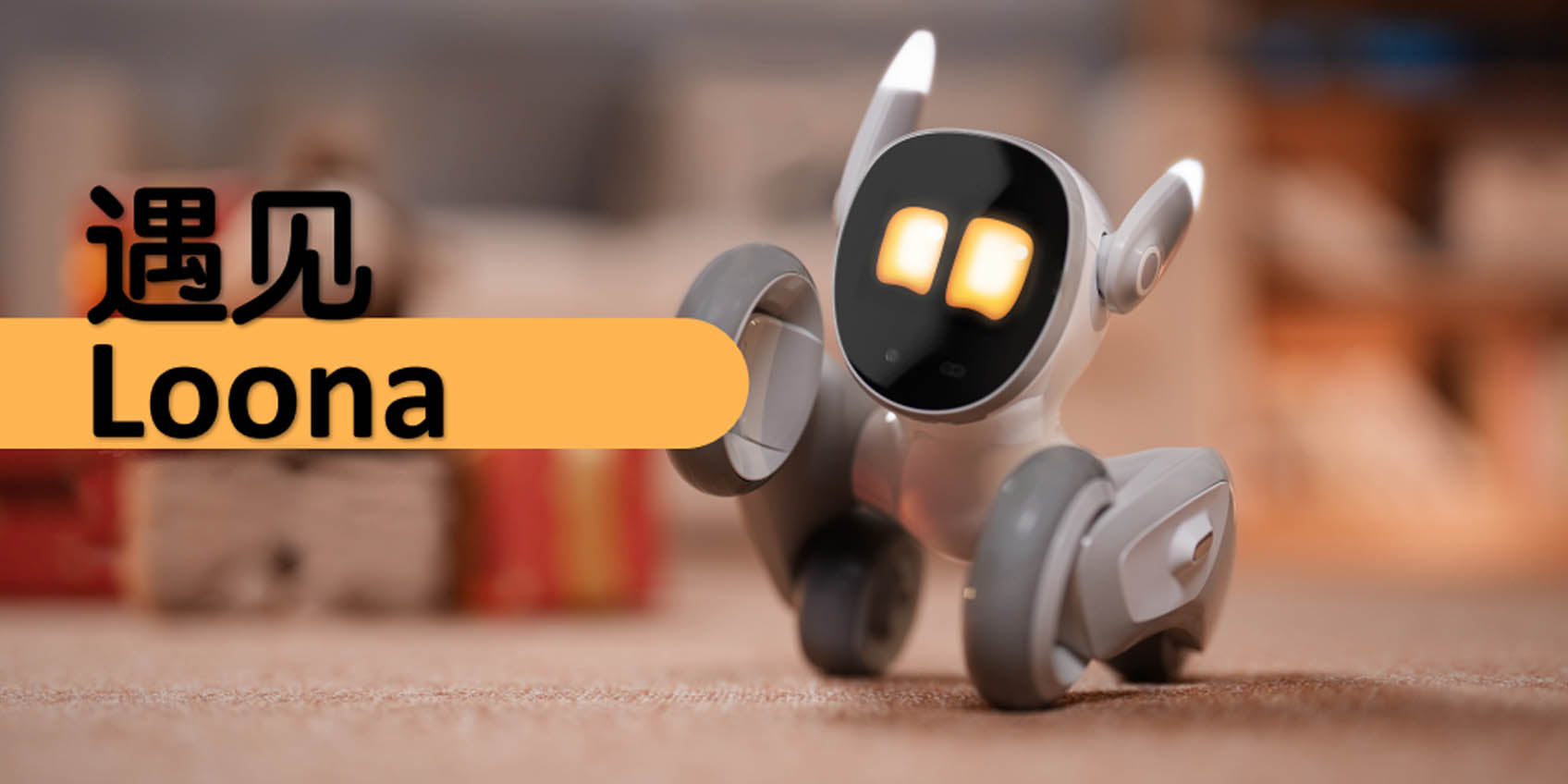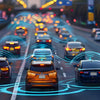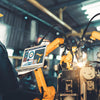Robotic Dog: The Innovation of Future Smart Pets and Assistive Tools

Robotic Dog: Creating the Future of Smart Assistants and Pets
With the rapid development of artificial intelligence (AI), robotics, and the Internet of Things (IoT), the robotic dog is becoming an important representation of future technology. Combining robotics, smart sensing, and control systems, robotic dogs can mimic the behavior and functions of real dogs, not only showcasing unique charm in entertainment and companionship but also serving as efficient assistive tools in various work environments.
Robotic dogs, through precise sensors, motion control technology, and AI algorithms, can sense the surrounding environment, move autonomously, interact with humans, and perform various tasks. In high-risk work environments, robotic dogs can even replace humans in dangerous tasks such as fire rescue, rubble search and rescue, and more. This article will delve into the core technologies of robotic dogs and their extensive applications in various industries.
What is a Robotic Dog?
A robotic dog is an intelligent device developed using advanced robotics technology and AI algorithms, designed to simulate the behavior, movement, and interaction abilities of a dog. Unlike traditional pet dogs, robotic dogs do not require feeding or care, but can perform various tasks and interact with humans through programming and sensors. Typically, robotic dogs are equipped with high-precision motion control systems, sensors, cameras, and microphones to perceive their environment and respond adaptively.
Core Technologies of Robotic Dogs
1. Motion Control and Stability
The motion control technology of robotic dogs is one of their core capabilities. Through precise mechanical design and AI algorithms, robotic dogs can achieve flexible limb movements, simulating real dogs’ running, jumping, and walking actions. These technologies allow robotic dogs to walk stably on complex terrain, such as climbing stairs and overcoming obstacles, demonstrating exceptional adaptability.
2. Sensors and Environmental Perception
To act autonomously and interact with the environment, robotic dogs are equipped with various sensors such as LiDAR, cameras, temperature and humidity sensors, and infrared sensors. These sensors help robotic dogs perceive surrounding objects, obstacles, and people, allowing them to avoid collisions, identify objects, and make intelligent responses.
For example, robotic dogs can use LiDAR to map the surrounding environment, avoid obstacles, and perform self-navigation.
3. Artificial Intelligence and Machine Learning
Artificial intelligence (AI) algorithms enable robotic dogs not only to perform preset tasks but also to learn and adapt to new environments. With the support of machine learning, robotic dogs can optimize their behavior patterns through interactions with the environment. For example, robotic dogs can learn new ways of interacting with humans through continuous training, providing more natural responses and services.
4. Integration with the Internet of Things (IoT)
Robotic dogs can interact with other smart devices and systems to enable intelligent control and coordination. Through IoT technology, robotic dogs can receive data from other devices and perform corresponding tasks. For instance, robotic dogs can integrate with smart home systems to automatically open doors, control lighting, and enhance home automation.

Applications of Robotic Dogs
1. Security and Surveillance
The use of robotic dogs in security and surveillance is becoming increasingly common. Due to their high mobility and autonomy, robotic dogs can effectively patrol complex environments and provide real-time video surveillance. In high-risk areas such as military bases, factories, and airports, robotic dogs can replace humans in dangerous patrols, offering continuous real-time monitoring and security data, greatly enhancing security efficiency.
In addition, robotic dogs play a crucial role in disaster rescue. They can rapidly enter disaster zones, such as during fires or earthquakes, to conduct search-and-rescue missions, assist in finding trapped individuals, and transmit location data to rescuers, reducing the burden on human rescuers, shortening rescue times, and improving rescue success rates.
2. Medical Assistance
In the field of healthcare, robotic dogs demonstrate vast application potential, especially in elderly care and assisting people with mobility impairments. Robotic dogs can assist elderly individuals with daily activities, remind them to take medication, provide companionship, and help with simple household tasks such as delivering medicine or fetching items.
Robotic dogs also have significant applications in hospitals, where they can assist medical staff in delivering medications and checking equipment, reducing the workload of healthcare workers and allowing them to focus on clinical tasks. In high-risk medical environments, robotic dogs can perform important duties such as monitoring, measuring temperature and humidity, and delivering devices.
3. Education and Companionship
As technology advances, the application of robotic dogs in education and companionship has also grown significantly. Robotic dogs can provide emotional companionship for children, enhancing their mental health, and engage them in interactive learning to improve cognitive skills. For example, robotic dogs can interact with children in games to help them learn programming, mathematics, and language, making learning both fun and educational.
Furthermore, robotic dogs can adjust their interaction style based on children’s interests and learning progress, offering personalized support. Compared to traditional educational tools, the high interactivity and intelligence of robotic dogs make learning more dynamic and effective.

4. Entertainment and Interaction
As a new type of entertainment tool, robotic dogs are becoming an essential part of family entertainment. Their excellent interactivity and intelligent features enable them to offer highly personalized entertainment experiences. For instance, robotic dogs can follow voice commands, participate in interactive games, and even engage in entertaining conversations or storytelling with their owners. Additionally, robotic dogs can respond to the emotional changes of their owners, becoming a fun and emotionally connected family companion.
As technology advances, the entertainment functions of robotic dogs will expand, with possibilities for them to be integrated into more complex scenarios, such as virtual reality (VR) or augmented reality (AR), providing unprecedented entertainment experiences for families.
5. Emergency and Rescue
In emergency and rescue operations, robotic dogs showcase their great potential through their high mobility and intelligent perception abilities. In extreme environments, such as earthquakes and fires, robotic dogs can quickly navigate through rubble and smoke-filled areas to search for survivors. Their autonomous navigation system and powerful environmental sensing capabilities allow them to avoid obstacles and enter places inaccessible to humans, providing immediate search-and-rescue support for rescuers.
Robotic dogs can also be equipped with various sensors and communication devices to transmit key data in real-time during extreme conditions, helping rescuers make more accurate decisions. For example, robotic dogs can transmit temperature and gas leak information in fire disaster sites, helping assess on-site safety and take appropriate actions.
With continued technological advancements, the rescue capabilities of robotic dogs will improve, enabling them to perform more complex rescue tasks and participate in broader disaster response systems, becoming an essential part of future intelligent emergency rescue systems.
Future Trends of Robotic Dogs
With continuous technological progress, robotic dogs will become more intelligent and multifunctional. The future robotic dog will possess more advanced sensory capabilities and emotional interaction abilities, while also performing more complex tasks. Specific trends include:
1. Enhanced Autonomous Learning
Future robotic dogs will have stronger self-learning abilities through more advanced machine learning algorithms, enabling them to adapt quickly to new environments and optimize their working behavior. This means that robotic dogs will be able to self-adjust and improve based on different scenarios, making them more effective in both work and daily life.

2. Highly Emotional Interaction
As AI develops, future robotic dogs will better understand and respond to human emotional needs. Robotic dogs will be able to recognize the emotions of their owners and respond accordingly, offering more personalized and emotionally engaging interactions. They will become more intimate companions, providing emotional support and companionship for their owners.
3. Integration with 5G and IoT
With the widespread adoption of 5G technology, robotic dogs will enable faster data transmission and real-time response capabilities. The low latency and high bandwidth of 5G will allow robotic dogs to more efficiently interact with other smart devices and achieve more precise control in complex environments.
4. Enhanced Task Execution
Future robotic dogs will not be limited to simple companionship or entertainment functions. They will be able to perform more complex tasks, such as playing a larger role in agriculture, logistics, construction, and other fields, becoming multifunctional professional tools.
Conclusion: Robotic Dogs Leading a New Era of Smart Living
As an important application of artificial intelligence and robotics technology, robotic dogs are gradually integrating into our daily lives. Whether in the home, workplace, healthcare, education, or other sectors, the widespread use of robotic dogs will significantly accelerate the popularization and development of intelligent living. With ongoing technological evolution, future robotic dogs will be smarter, more interactive, and more versatile, becoming invaluable assistants and companions in our lives.




